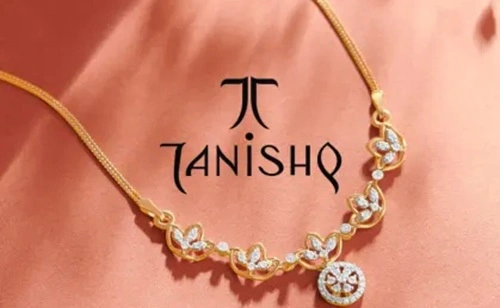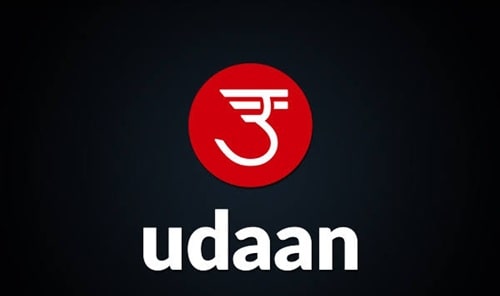Tanishq is a well-established and premium jewellery brand in India, which is owned by the most reputed Titan Company Ltd. These companies are part of the Tata group and are well-associated with quality, design, and credibility. Tanishq makes some of the best and high-end designs with purity and customer trust. The company was established in 1994, and the headquarters are in Bengaluru.
Tanishq is thriving in the market with its trust among Indians, which makes it a credible stop for buying jewellery. Tanishq offers gold, diamond, and gemstone jewellery with sub-stands like Mia and Zoya to cater to a wide range of audience. The brand has more than 400 retail stores, which are owned by the company itself, and there are online channels and more. The brand focuses on lighter jewellery, which is perfect for everyday wear, to target a younger or more price-sensitive audience as well.
To understand how Tanishq makes money, looking at its business structure and revenue streams will help in understanding it better. Let’s get started:

How is Tanishq’s Business Model Structured?
Tanishq’s business model considers multiple elements, product segments, and customer segments. The core business is to sell jewellery in various forms, like plain gold, studded with diamonds or gemstones, luxury or occasional jewellery, and lastly, bridal jewellery. Through these segments, the brand can cater to a broad range of audiences, which allows Tanishq to serve both high-ticket customers and regular people.
On the distribution and pricing side, Tanishq uses its reputation and trust to cater through a strong physical store network. These 400 stores provide exposure, ensure trust with a physical outlet, provide convenience, and brand experience. The brand uses an omnichannel approach with an online store as well. Most people browse through the online platform to find what jewellery they like and make the purchase in-store, which helps the brand remain relevant to the audience.
| Company/Brand | Tanishq (Titan Company Ltd) |
| Establishment Year | 1994 |
| Headquarters | Bengaluru, Karnataka, India |
| Founder/Owner | Owned by Titan Company Ltd (part of the Tata group) |
| Industry | Jewellery / Retail (Gold, Diamond, Gemstone jewellery, luxury and everyday wear) |
| Net Worth (2025) | ₹52,679 crore standalone jewellery income (Titan jewellery division) for FY25. |
| Total Revenue 2025 | Jewellery division growth 20% in FY24 to ₹38,353 crores; Mia brand crossed ₹1,000 crores in annual revenue by September 2025. |
How Does Tanishq Make Money?
Tanishq uses multiple revenue streams to earn money while being affordable in a few segments. Let’s have a look at a few key revenue sources:
1. Jewellery Sales
The primary source of revenue for Tanishq is through selling jewellery, where customers can choose between plain gold jewellery like rings, bracelets, and necklaces. Then there are studded jewellery options where diamonds or gemstones are studded in gold or platinum. The third type of jewellery at Tanishq is with bridal or wedding designs in mind to target high-ticket and luxury collections.
2. Making Charges and Premium Pricing for The Design
Tanishq has an in-house team of expert craftsmen who create designs, bring those designs to reality, and customize them according to the customer’s demand. Tanishq charges making fees, which are usually between 5% to 30% of the total material cost. The making charges cover design, labour, craftsmanship, manufacturing overhead, and other expenses. The charges may vary, but this is a direct source of revenue in the gold business.
3. Store and Retail Network
Physical stores are very important for Tanishq. More stores mean more reach, where most of its stores are in metro, tier-2, and tier-3 cities. The onsite store experience, display, customer service, and trust play a big role in jewellery purchases. Also, having more stores increases footfall. Tanishq also complements store sales with online/omnichannel options (ordering online, showrooms, digital catalogs, etc.).
4. Sub-Brands and Diversification
Tanishq has also developed sub-brands like Mia, which has designer jewellery for everyday wear with affordable pricing to target millennials or Gen Z audience. Meanwhile, Tanishq also has a luxury sub-brand called Zoya, which offers luxury and high-end designs to provide quality options for brides or jewellery for weddings.
Financial Performances
In FY25, Titan’s jewellery division has shown strong growth with brands like Tanishq, Mia, Zoya, and CaratLane. The standalone jewellery income was about ₹52,679 crores, whereas in FT 2024, the jewellery division was 20% lower with total revenue of ₹28,353 crores. In simple terms, Tanishq’s demand is increasing with its quality design, trust, and credibility.
What’s new in 2025?
Tanishq is a top brand in the jewellery market, and its sub-brands are seeing strong growth in the everyday and lightweight jewellery segment. The revenue of Mia alone crosses ₹1,000 crore, and it is aimed to double by FY27. The gold prices skyrocketed in 2025, crossing 1,20 lakh for 24 carat 10 gram. Despite the high price, the brand is doing great as the making charges are directly optional to gold prices.



